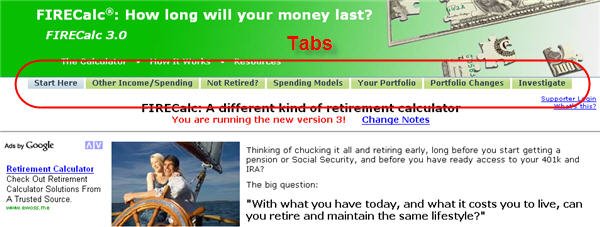rocks911
Recycles dryer sheets
Hey all,
I'm a 51 YO male planning on retiring at 55. I am a fireifghter in Texas and a member of the Texas Municipal Retirement System.
In 4 years when I am looking to leave the job TMRS will pay me $4000 a month for life (and for the life of my wife should I die) after I pull about $240,000 in a lump sum. To the lump sum I have $125,000 currently in deferred comp to add. My wife has in the neighborhood of $95,000 in a 401.
I'm planning on combining the $240,000 and the $125,000 and moving it to a retirement account (USAA maybe?) and drawing on it to supplement my TMRS. My wifes money wont be available until the rules for 401's (not sure what that is) allow it to be drawn on.
A couple of questions:
Is there an online calculator that provides for these types of retirement funds? The FIREcalc asks for dollar amounts which I dont really have an answer for insofar as my TMRS is a monthly benefit and does not really plug into the calculator. So a calculator that assumes a lump sum plus a monthly benefit over time is what I really need to locate to help with planning.
Clearly medical coverage is the huge wild card and I dont even know where to begin asking questions about that.
Can anybody make a recommendation as to a financial adviser? One of the firemen at my department who is ooooooooold (for the fire service anyways) went to one who advised that he continue to work. I thought that was a no-brainer, pay a guy $300 for advice that culminates in "you need to keep working", I could have told him that for $50. My wife was visiting a financial planner years ago also and mostly I think it helped the financial planners bottom line more than my wifes, so is there any recommendation someone could make about a reputable, helpful financial planner?
And lastly, is USAA a good company to move my retirement funds to?
Thanks in advance for any help from an overwelmed fire guy.
I'm a 51 YO male planning on retiring at 55. I am a fireifghter in Texas and a member of the Texas Municipal Retirement System.
In 4 years when I am looking to leave the job TMRS will pay me $4000 a month for life (and for the life of my wife should I die) after I pull about $240,000 in a lump sum. To the lump sum I have $125,000 currently in deferred comp to add. My wife has in the neighborhood of $95,000 in a 401.
I'm planning on combining the $240,000 and the $125,000 and moving it to a retirement account (USAA maybe?) and drawing on it to supplement my TMRS. My wifes money wont be available until the rules for 401's (not sure what that is) allow it to be drawn on.
A couple of questions:
Is there an online calculator that provides for these types of retirement funds? The FIREcalc asks for dollar amounts which I dont really have an answer for insofar as my TMRS is a monthly benefit and does not really plug into the calculator. So a calculator that assumes a lump sum plus a monthly benefit over time is what I really need to locate to help with planning.
Clearly medical coverage is the huge wild card and I dont even know where to begin asking questions about that.
Can anybody make a recommendation as to a financial adviser? One of the firemen at my department who is ooooooooold (for the fire service anyways) went to one who advised that he continue to work. I thought that was a no-brainer, pay a guy $300 for advice that culminates in "you need to keep working", I could have told him that for $50. My wife was visiting a financial planner years ago also and mostly I think it helped the financial planners bottom line more than my wifes, so is there any recommendation someone could make about a reputable, helpful financial planner?
And lastly, is USAA a good company to move my retirement funds to?
Thanks in advance for any help from an overwelmed fire guy.


 .
.